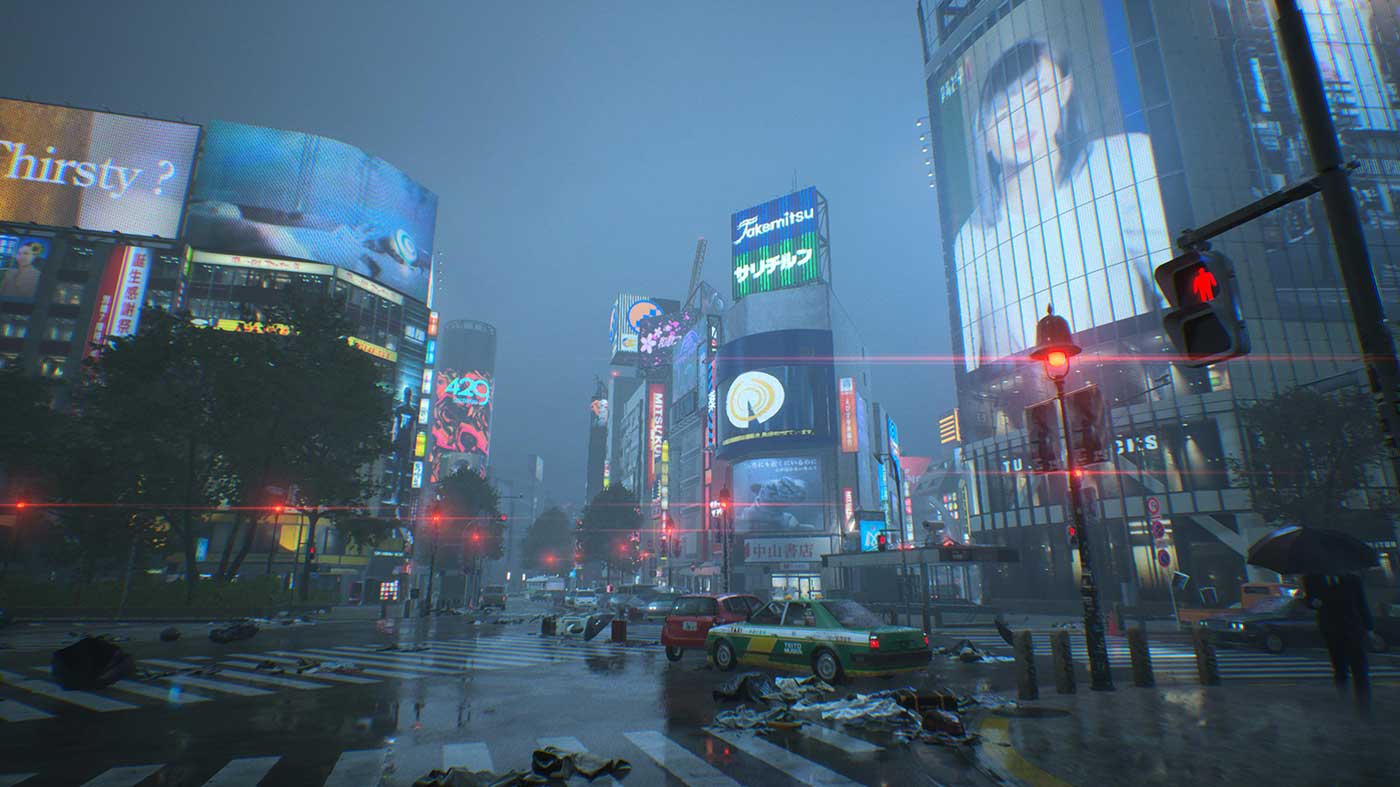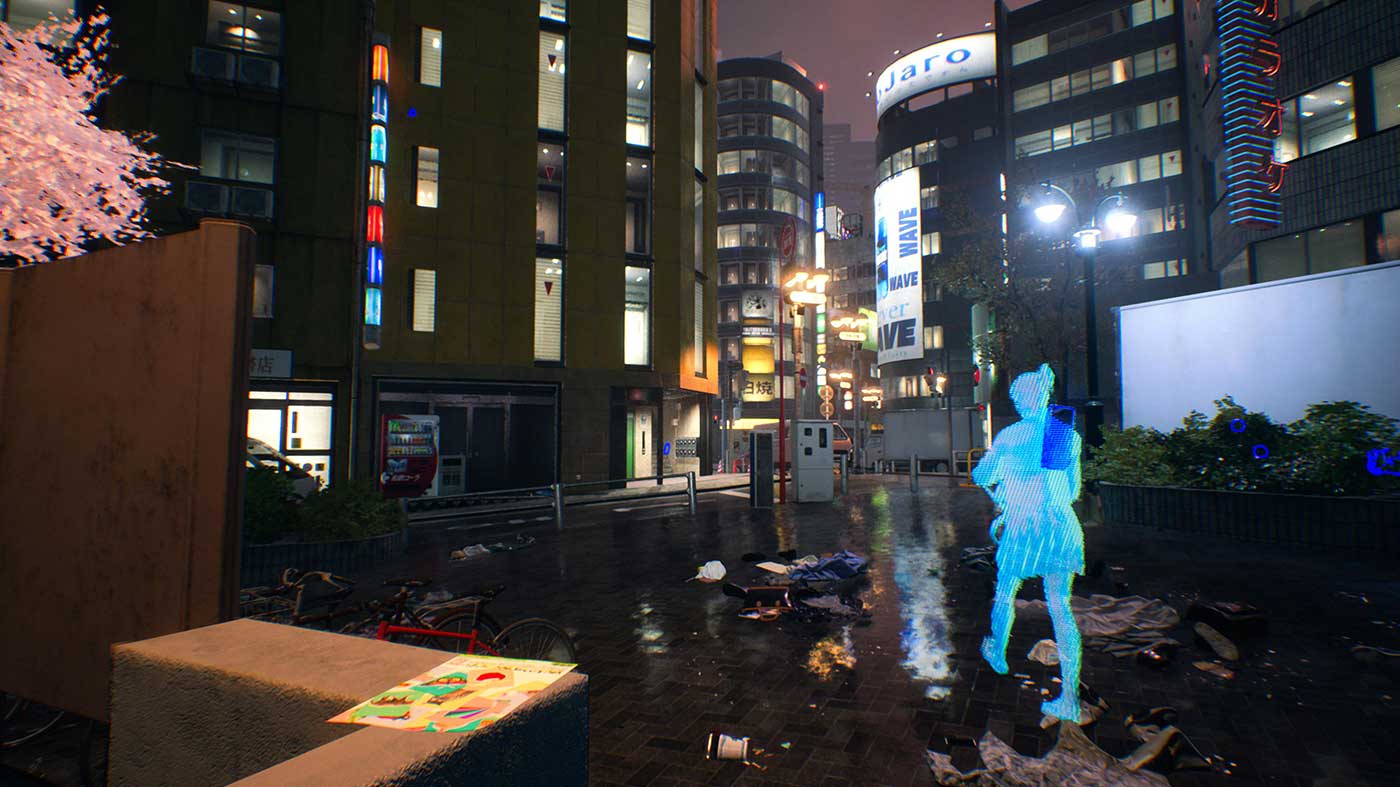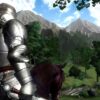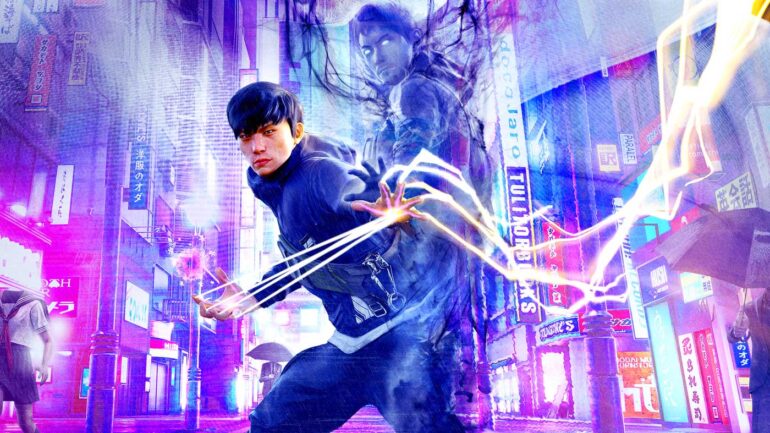Ghostwire: Tokyo is finally out today and ahead of launch, we had the chance to talk to Director, Kenji Kimura and Producer Masato Kimura about the game’s origins and what sets the game apart from every other open world game on the market.
I want to start off in the early days of the project – there have been reports that this began life as The Evil Within 3 before things were changed to be Ghostwire: Tokyo. At what point did you feel this?
Yeah that was very very early. The moment we started to think of using this setting that is based on Tokyo allowed us to start thinking about you know, what kind of possibilities exist as a form of a game. And that changed things so much that it felt better served as a different thing instead of The Evil Within. That’s where Ghostwire Tokyo was pretty much born.
Can you point to any other games that might have inspired your open world design for Ghostwire Tokyo?
The inspiration for this game is definitely Tokyo itself. Tokyo is very interesting because it is a foundation – you know as a place there is all this history and culture and on top of that there’s a lot of modern things. We felt there was so many cool things about this city that it would make for a really good game.
When we think about what parts we wanted to put into the game, we decided that and we took walks around the city to rediscover what kind of things would be cool to fit into the game. Since we live here, a lot of these things we see on a daily basis. But there’s a lot of interesting things about the city like for example you can be walking through a street and sometimes you don’t even need to walk through an alley but you’ll enter a completely different type of place. The neighbourhoods are knit so closely that you might be in a set of office buildings and then a neighbourhood of one story houses.
It’s that kind of switch that occurs so naturally that it was one of those cool things about the city. There were some touristy things but what was interesting was that when we started listing things there were a lot of things that wouldn’t be on the tour guide like normal neighbourhoods and shacks that have somehow survived the times. Even graveyards. Darker and shabbier areas had a type of flavour to them. It felt like the city itself was encouraging you to walk around and explore a little more, as new things kept coming into your vision.
When we started to make this game, it kind of led itself into becoming more of a game that encourages exploration and the map kept becoming more and more open and more of a sandbox. It was a natural progression for this to become a sandbox style of game.

So many open world games are filled with things to do, how did you try to keep that interesting in Ghostwire: Tokyo?
It is very touching that you mention this because we had a lot of challenges in terms of finding the right amount of balance. It’s something that required a lot of trial and error on our side. We did have to choose which side missions to be appropriate, which would be fun, how much would feel right. It required a lot of trial and error – we would think logically by printing out the map and laying down where we put them.
Once you put them into the game and actually played it, it would be too cluttered and cause more confusion and stress from a player standpoint. Because you’d see another side mission while another was in front of you. We want to have the player actually choosing what they do between two missions. At times we had to really, you know, even if it was finished and complete, we’d have to take it and move it somewhere else completely different. It would require more work to be done which could be painful, but we had to do a lot of iteration in that department to think about player experience. It took a lot to get there and we are very glad you noticed that kind of thing.
There’s no secret recipe in how to do it, you just have to add it to the game and try it and keep trying. And the team really for this project tried to focus on creating the city first because of how it started. It began looking nice and we fell in love with this idea and started expanding it – so we focused on the city first. We applied gameplay later. That’s normally not what happens – you’d work this out together. We did Tokyo first and created it, so it was a different process. We don’t recommend developers to do it this way because it involves a lot of trial and error – we really had to get out hands dirty to try so many different things. It was painful, but I think we did a good job. We are proud and happy that we did all of that.
The game’s combat is really unique and something I’ve not seen in games often, if ever. With three powers in the game, were there any other powers you wanted to include that were cut at any point?
Thinking back, initially what was on paper when I started considering combat. I recall writing down eight types of attacks. But we really divided them into the way they are now – right now its kind of like a wind attack is a handgun, the water attack is a shotgun and the fire is like a rocket launcher. We didn’t come up with that early in the phase. In earlier phases, the attacks were more simulation oriented – we tried it out but over time we felt and started gravitating towards a different concept that was easier to understand. So you could defeat evil spirits and also continue to and not consider all these different kinds of attacks as they could hinder you ability to appreciate the scenery or the story.
We didn’t want to take away mind space from the player so we gravitated towards what we have now. Making it simpler made it easier for the experience we wanted to achieve, we did try a whole bunch of things. The conclusion was that what we had in the game was best – I have no regrets as in “I wish we could try things out”, I was happy with the combat system we have now.

When you knew you would be developing for PlayStation 5, how did that affect development? What could you do being on the PlayStation 5 that you couldn’t on the older consoles?
Our vision for the game was to allow the player to take a virtual visit into a paranormal Tokyo. With the PlayStation5 it allowed us to deepen that sense of immersion – the DualSense controller as one example – you can sense a lot of things through your hands through combat and different actions. The project didn’t get wider scope but deeper.
There’s a sense of an overall “Power Up”. We could “Power Up” the sense of “feel goodness” of the game overall. Because of the SSD capabilities we could load in much more objects and scenery when walking around and traversing the map. Grappling up and gliding around feels better because of the PS5. it’s also improving the feeling you’re actually there with the 3D Audio. It is just deeper immersion like we talked about earlier – the deeper allows for more feel goodness about all the things you can experience.
A lucky happy coincidence was that when we were creating Tokyo, we were thinking of the night time scenery after rain would be good with puddles. So we were prototyping with that kind of scenery, but when PS5 became the console of choice for development, the raytracing function was very helpful and brings a completely new level to the presentation. It was a happy coincidence – we didn’t say “Hey PS5 lets add more neon night scenes”, we were already making them.
I can see this becoming a series for Tango, potentially, could we ever see a Ghostwire Tokyo 2 or perhaps take the Ghostwire concept to another city?
There were times during development where I had moments thinking about perhaps sequel this would be good. We got so focused on the game we’re making right now and making that the best experience that we stopped thinking about sequels and kind of focused on the work at hand.
Right now, we’re still in the happy afterglow of just getting to the finish line. So we haven’t had much time to think about if there will be a sequel. I’m sure after we take a break, with some time passes, there will be more fresh ideas. Right now though, we’re just super happy that we’re able to offer a complete experience with this game because we ourselves enjoy it. We are happy to have had the opportunity to make a game like this – it’s a wonderful thing to finish this product.



